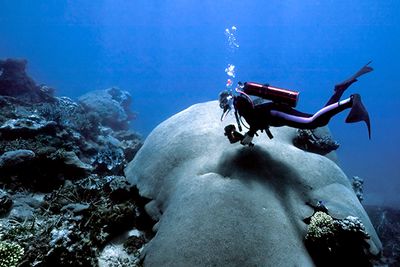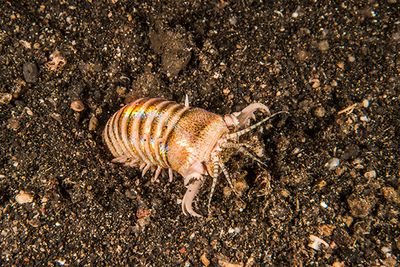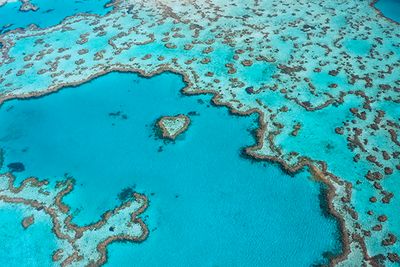Ever wonder how the team at the BBC's Blue Planet II found out about the bird-eating fish? How on earth they managed to film the creepy bobbit worm lurking in the seafloor? How many hours they spent underwater (hint: a lot)? Us too. That's why we hosted a rather marvellous evening (if we say so ourselves) exploring behind the scenes of the ground-breaking series; we were joined by Sarah Conner, Assistant Producer across the series, and the good folks at Blue Marine Foundation. Here's a sneak peak of what we discovered…

Key Discoveries
The team involved had the patience of saints, completing a whopping 125 expeditions across the globe and spending almost a year underwater (or 8,000 hours) filming.

An Intricate Web
From the grouper and octopus hunting together in the Great Barrier Reef to the Galapagos sea lions' sneaky tactics for catching yellow fin tuna in the Galapagos, finding these fascinating subjects required connecting with divemasters, scientists, fishermen and general people 'in the know' worldwide (that includes scouring YouTube and Instagram). Remember the ferocious bobbit worm? Lembeh Dive Resort's divemasters located the creepy critter every night for three weeks on the trot so that Sarah and her team could film. Which, incidentally, they filmed in complete darkness for eight hours wearing only 5mm wetsuits.

The Technology
The development of new technologies allowed viewers to witness the underwater world in a way never seen before. Think the bioluminescent mobula rays in the Sea of Cortez and the infrared technology required to film the bobbit worm hunting. Not to mention tagging marine life to witness their unique interactions, such as sperm whales in the Azores or the turtle health spa in Borneo.

Six Months On…
13 scientific papers (with more in the pipeline) have been published following the series' discoveries. Most significantly, however, the series inspired viewers (all quarter of a billion of them…) all over the world the join the fight for ocean conservation. Which leads us to the next speaker in the evening…

Blue Marine Foundation
We had the pleasure of listening to Vivienne Evans, Blue Marine Foundation's (BLUE) Project Co-ordinator in the Maldives, discuss their grouper fishery and conservation project.

Who They Are
In a nutshell, BLUE works to protect and preserve the world's oceans by creating new marine reserves and promoting sustainable fishing. In the Maldives they've been busy working with the Government and Six Senses Laamu to tackle the overfishing of groupers through research and education - discovering seven new grouper spawning aggregation sites in the process.

What You Can Do…
A few handy tips and tricks for preserving the ocean.
…Sourcing fish
Know where your seafood comes from, the Marine Conservation Society do a handy pocket sized sustainable fish guides for when you are out and about.
…Plastic
Take a gander of our plastic pollution blog for handy tips on curbing plastic in your life. We also like to take a mesh bag for storing fins when on a dive to collect any plastic we come across.
…Build awareness
Sign petitions, the Government has already announced a single-use plastic tax following the series, and you can continue the momentum by signing petitions and building awareness.

…Your holiday
We are proud to off-set 100% of the carbon footprint generated by transportation in each of your holidays by participating in the Livelihoods Carbon Fund. You can read all about it here.












